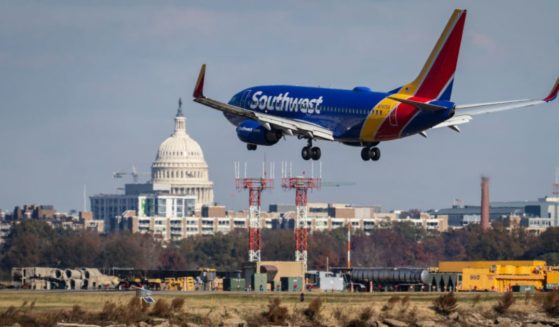Flight Data Reveals Cause of Mystery Boeing 737 Crash That Killed 132: Report
A plane crash that led China Eastern Airlines to ground its fleet of Boeing 737-800 jets for a month could have been the result of an intentional effort to crash the jet, according to a new report.
The Wall Street Journal reported that a preliminary assessment of the March 21 crash, developed by American officials, indicated someone in the cockpit intentionally crashed the plane.
All 132 people aboard the plane were killed in the crash.
“The plane did what it was told to do by someone in the cockpit,” a source said, according to the Journal.
The assessment was based on data from a black box recovered at the crash site.
Chinese authorities have not cited any mechanical or technical issues with the jet. That dovetails with a report from Reuters that the crew is being examined because there is no evidence of a malfunction.
Neither air safety regulators nor Boeing has issued any bulletins about a possible malfunction, as would be required if a problem with the jet was believed to have caused the crash.
The pilot is a top focus of investigators, although the theory that someone entered the cockpit by force has not been completely discounted, according to the Journal.
China Eastern Airlines claims that data analysis of the black box is not yet complete and does not believe a cockpit intrusion took place.
“Any unofficial speculation may interfere with the accident investigation and affect the real progress of the global air transport industry,” the airline said.
The airline insisted a cockpit intrusion wasn’t plausible. It cited information from a March 25 news conference, during which Chinese authorities said no emergency alert had been sent beforehand.
The Journal report echoed comments made in April to FlightGlobal by John Goglia, an aviation safety consultant and former National Transportation Safety Board member.
“That kind of vertical dive, without a radio call of any kind from the flight crew, could clearly indicate a human activity to make that happen,” Goglia said.
“Nobody can come up with a mechanical failure mode that would make the airplane behave the way it did.”
About an hour after takeoff and cruising at 29,100 feet, the aircraft went into a steep and at times nearly vertical dive.
Unverified data said that at some points in the descent, the plane plummeted at a rate of 30,000 feet per minute.
“It simply nosed over and came down damn near vertically,” Goglia said.
Airliners do not “come straight down” unless someone in the cockpit makes it happen and keeps pressure on the controls.
“In other words, you have to make the airplane go straight down,” he said.
Goglia noted that the pilots made no contact with air traffic control. “There should have been some sort of a call.”
Truth and Accuracy
We are committed to truth and accuracy in all of our journalism. Read our editorial standards.












